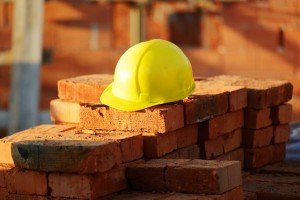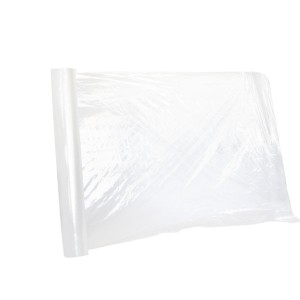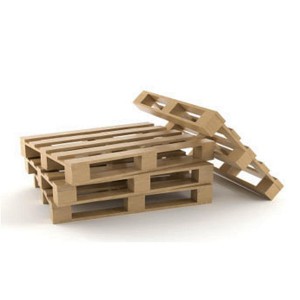Packaging Solutions for Construction & Decorating
Friday's Industry Insights
Welcome back to our regular 'Packaging For...' series! This week, we're shifting focus away from the creative packaging ideas we've covered recently, which were all about safeguarding delicate items. Our industry thrives on diversity, and our products are crafted to cater to various applications, ranging from light-duty to extra-heavy-duty solutions.

Although the construction sector may not always be the first that comes to mind when thinking about packaging customers, it's a vital part of the supply chain. The industry relies heavily on industrial packaging products to move large, bulky items around construction sites and protect finished spaces during building projects.
We'd love to hear from professionals in both the building and decorating fields about any challenges you face where packaging could offer assistance. Feel free to reach out via Twitter or email!
Key Packaging Requirements for the Construction Industry
Construction work involves demanding physical labor, and the tools and materials used are often heavy and messy. This means builders and construction firms need packaging that can withstand the harsh conditions of the job. Some of the primary packaging needs for this sector include:
- Strength: Construction materials like bricks and stones are typically heavy and bulky. They require packaging that can handle the load and resist damage.
- Protection: Unlike many industries, construction packaging serves as protective coverings for areas while work is ongoing. It must shield these spaces from dust, debris, and moisture.
- Disposal: After a project wraps up, there's often a significant amount of leftover materials and waste. Builders and decorators need packaging that's durable, recyclable, and easy to clean up.
Packaging Options Tailored for Construction
Centre-Folded Polythene

This is one of the most versatile products in the construction industry due to its adaptability. One of the standout features of polythene is its waterproof nature, making it ideal for outdoor work, especially when protecting materials like concrete and bricks from excessive moisture.
For outdoor applications, we recommend heavy-duty polythene. Kite offers four types of polythene, all centre-folded for convenience. Light and medium-duty options work well for interior renovation tasks, such as covering furniture during painting. Even the lighter grades are robust enough to prevent paint and chemicals from seeping through.
Recently, we introduced extra-heavy-duty polythene, also known as 'builder's polythene.' At 1000 gauge and 250 microns thick, it's incredibly strong and suited for numerous builder-related uses. It can be used to slide materials across a yard, cover openings like wall holes where windows will eventually fit, and act as weatherproofing for newly constructed buildings. Its superior puncture resistance and ability to bear heavy loads make it a top choice for demanding environments.
Pallets

Treated timber pallets remain popular in construction for moving building supplies. Their density provides the necessary strength to support heavy loads. Timber pallets are frequently used to stack bricks and are perfect for larger sites where forklifts are essential. However, more clients are opting for pressed wood pallets, which are eco-friendly since they're fully recyclable and made from recycled materials. They're also lighter, easier to handle, and stackable, making them suitable for smaller construction operations.
Strapping
When it comes to securing pallets, the construction industry prefers polypropylene strapping. Available in various thicknesses, we suggest the 0.9mm option, which has a breaking strain of 300kg. These reels are compact and easy to store, unlike cardboard, which can degrade in outdoor settings. Strapping is preferable to pallet wrap for temporary storage since building contracts often have tight deadlines, requiring quick access to goods. Strapping can be easily released using a strapping seal—available in metal or plastic (plastic is recommended for PP strapping)—allowing users to tighten and loosen the straps effortlessly.
Vermiculite
A relatively new addition to our offerings, vermiculite can be found in the 'void fill' section. Traditionally used as an alternative to polystyrene chips for filling gaps in boxes, vermiculite is particularly effective for packaging chemicals, hazardous materials, and liquids thanks to its absorbent and fire-resistant qualities.
Interestingly, vermiculite is also gaining traction in the construction and landscaping sectors. When mixed with cement, it creates lightweight concrete that's ideal for bricklaying and more cost-effective than sand and gravel. Mixed with gypsum, it forms a smooth plaster for leveling interior walls. Even gardeners and landscapers are adopting vermiculite as a cleaner, more visually appealing alternative to soil.
And there you have it—a brief overview of some of the specialized packaging solutions available for the construction industry. If you're working in this field, let us know if you’ve encountered any unique packaging challenges or successes—your feedback helps shape future innovations in the industry.
Both hyaluronic acid dermal filler and Reborn PLLA filler are designed to address lost volume, fine lines, folds and wrinkles. Due to the aging process, environmental stressors, and our genetic predisposition, we suffer from loss of collagen at a rate of about 1% annually after the age of 20. Loss of collagen leads to thinning of skin which results in the formation of wrinkles and folds. Collagen is a fibrous protein in the deep dermal layer that gives our skin structural support and helps to maintain shape, moisture, and elasticity of the skin. A healthy supply of collagen is the source of smooth skin and a youthful appearance.
But ordinary Dermal Fillers are made of Hyaluronic acid designed to hold its shape in the form of a gel-like substance. hyaluronic acid dermal fillers do not stimulate collagen production, but rather are meant to temporarily replace missing volume. The effects of Dermal Filler are apparent immediately. Whereas the effects of Reborn PLLA Dermal Filler happens gradually since it takes time for the body to build collagen.
Reborn PLLA dermal Filler is an injectable biostimulator made of Poly-l-lactic Acid (PLLA). Reborn PLLA has a liquid consistency and it's injected underneath the skin. Once injected, Reborn incorporates into the tissues and stimulates your body's natural production of collagen.Reborn plla is a non-surgical treatment that requires minimal downtime, enabling you to return to your daily activities after the procedure. Reborn gives beautiful and natural-looking results that will appear gradually avoiding sudden dramatic changes in your appearance. Reborn's main ingredient Poly-l-lactic acid(PLLA), provides results that last more than two years.
Over the course of several months, the drug biodegrades and is eliminated from the body, but in its place what remains is not emptiness, but collagen and elastin. That is why the effect of Reborn injections lasts for up to two years or longer!
Welcome to contact us for more details.

Dermal Fillers For Marionette Lines,Dermal Fillers Juvederm,Plla Filler,Best Wrinkle Filler For Face
Rimless Industry Co.,Ltd. , https://www.rebornplla.com